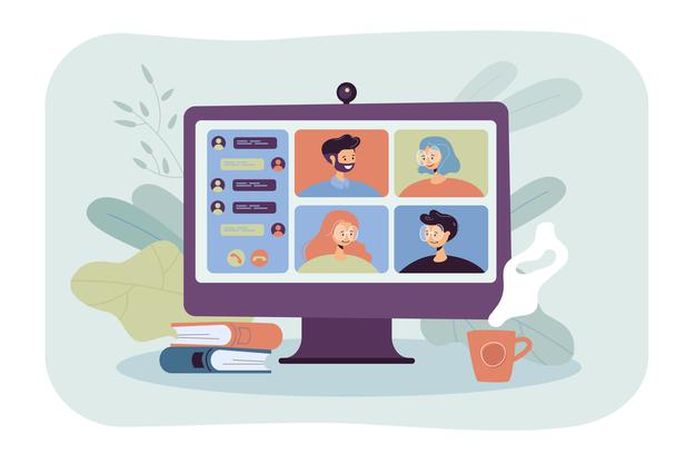The coronavirus outbreak has necessitated a rather monumental shift in how global conferencing is done. For the foreseeable future, physical interactions, business lunches, and conference room meetings are simply not on the agenda.
Necessity breeds innovation, and with very little bandwidth for air travel, global communications have adapted to the digital arena as an alternative. Whether this necessity becomes the new normal is still up for debate. If e-conferences are now a mainstay of business networking and information sharing, the more traditional methods of running a conference may be seen as a rather outdated and costly affair in a post-COVID conference world.
It’s no surprise that virtual meetings have reached new record highs. The world is discovering through e-conferences, online information sharing, and e-conference interpreting that distance no longer has to mean being disconnected. More information on this website.
Below is everything you need to know and consider for your e-conference, to ensure that your communications are clear, universally understandable, and most important of all, unified under one cohesive digital umbrella.
Keep it human

Going digital doesn’t mean losing the human touch. The hybrid of personability and innovative methods of communication is a young, but thriving one. This means that tried and tested conference tools like creating a strong rapport doesn’t go out the window in e-conferencing
Allocate time for those in attendance to introduce themselves. Ask them broad questions about future goals and post-pandemic plans to keep everyone in a positive mindset.
People in different locations will find mutual ground through this, and that commonality will facilitate better discussions and a happy group dynamic.
Remember the Attendees’ Point of View

Take some time to put yourself in the shoes of your attendees. Chances are that many will log on across several different time zones, speak multiple languages, and have a culture that varies from yours.
Every last individual in your e-conference should feel like a vital part of the group. Exclusion is universal and can stop a productive e-conference in its tracks.Consider the potential surroundings of your attendees. Make a plan to openly ask if anyone has any specific needs that you should be aware of. A little preparation at the beginning of your e-conference can make all the difference. After all, a comfortable audience is an engaged one.
Be clear of the need for attendees to be in a quiet setting, but remain mindful of those who may be working from home with children to look after. Pre-planned breaks that are communicated before the beginning of your meeting can help people make the necessary accommodations to give you their full attention.
Stay Accessible

Travel and visa issues were once insurmountable obstacles in attending a conference, and the accessibility of online conferencing has been a positive force for change in global learning and conferences.
It’s important to not assume that all attendees will have access to the same systems as you and others, so making sure they download the essentials beforehand is key. Alternatively, you can email over attachments of what will be covered to accommodate this.
Vital tools such as screen sharing and collaboration software blur the lines between countries and time zones. Replicate the standard meeting tasks of breakout groups by organizing small Zoom groups that can delve deeper into the subject and return with ideas or questions.
Remember Your Role

Without the ability to read a room where all guests are in physical attendance, it can be easy to forget some very important aspects of group dynamics. Above all else, the group is looking to you for guidance as the facilitator.
It’s your responsibility to reiterate any learning outcomes, objectives, or processes to the group. You set the pace, and ensure that once a step is finished, it is also recapped and mutually understood before moving on to the next stage.
And most importantly, it’s your role to engage and inspire. In order to make these goals a reality, there must be a comprehensively planned online conference that welcomes, educates, and elaborates in a way that is universally understood.
Don’t lose sight of the Overall Goal

Always keep the overall goal in mind. If you implement some small considerations along the way in clear, concise details, the bigger picture should take care of itself.
This means adding links to articles that back up your points, whether they’re for use during the e-conference or post-meeting, for attendees to get an even richer understanding of your desired objectives. These small inclusions can keep the inspiration levels high throughout, and maintain the overall flow towards the group understanding the broader outcomes.
Don’t be apprehensive when it comes to your attendees. Ask how they are feeling, and make an effort to openly address the unusual situation that we are all stuck in.
If possible, make time for a few fun activities in between steps. A puzzle, a group quiz, or some brain teasers can restore the energy of the post-lunchtime lull or make that first morning feel exciting.
Just because virtual meetings are a necessity, they shouldn’t come at the expense of a group’s energy and thirst for learning or achieving a goal. Preparation is the most surefire way to exude the confidence you need to own the digital room.
The world has been fast to adapt to the global pandemic, but businesses, in particular, have thrived in this new and exciting digital landscape. E-conferences have certainly made the world feel smaller, but with new innovations comes the risk of overlooking what is most important to your industry.
Making sure that all of your online conference attendees feel seen, acknowledged, and understood is the first step in an incredibly exciting time for global communications.
However, remaining sensitive to the needs and intricacies of other cultures bolsters a brand’s global presence, and helps to harness the world’s language barriers and condense them into one unified communication tool.
Be sure to stay appreciative of the differences in language, culture, and time zones, and you’ll soon find yourself universally understood and prosperous.









